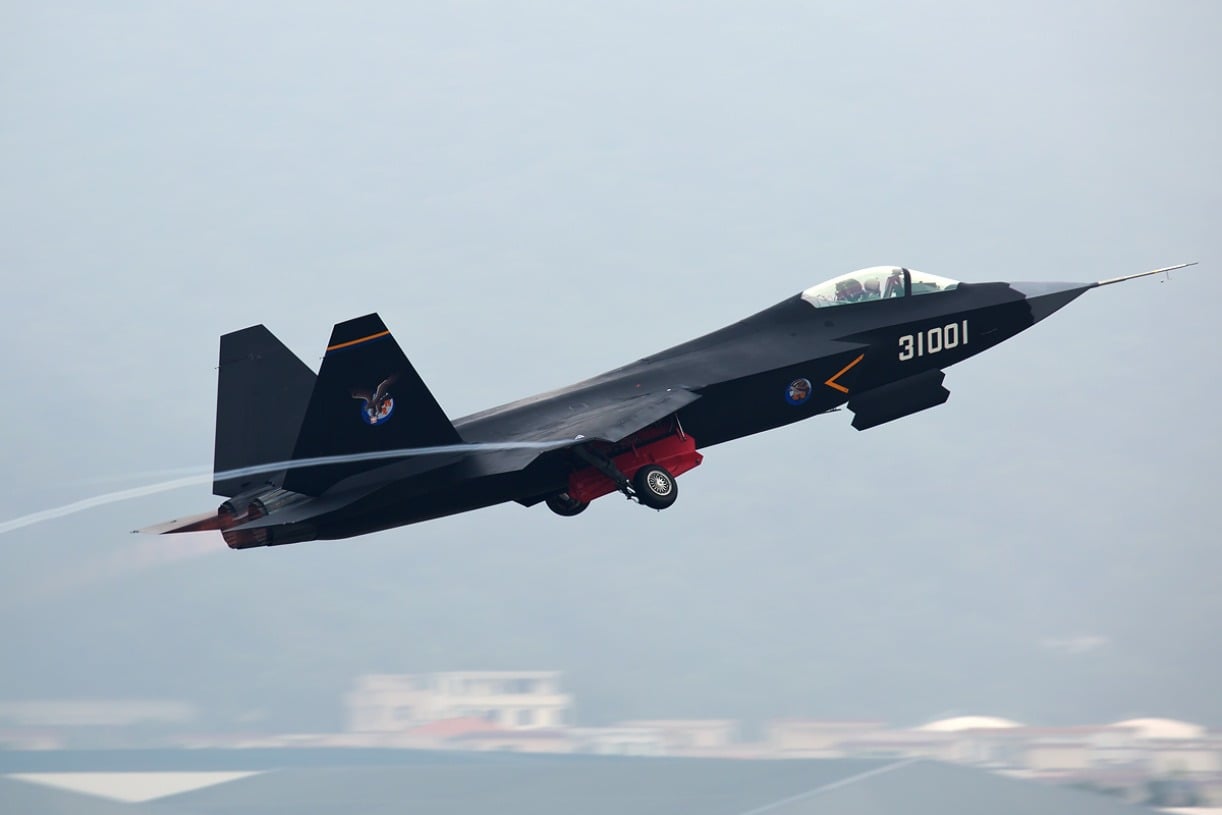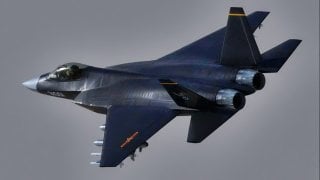FC-31: China’s Answer to the F-35 Fighter Is a Real Threat
The FC-31, a fifth-generation stealth fighter developed by China's Shenyang Aircraft Corporation, aims to rival the U.S. F-35 and strengthen the People's Liberation Army Air Force (PLAAF). Featuring advanced avionics, sensors, and an array of armaments, the FC-31 is poised to replace China's aging J-10 and J-11 fleets.
Summary and Key Points: The FC-31, a fifth-generation stealth fighter developed by China's Shenyang Aircraft Corporation, aims to rival the U.S. F-35 and strengthen the People's Liberation Army Air Force (PLAAF). Featuring advanced avionics, sensors, and an array of armaments, the FC-31 is poised to replace China's aging J-10 and J-11 fleets.

-As Beijing advances this technology, it also challenges Russia's Su-57 in the global market, offering a potentially more affordable alternative.
-While the FC-31 is untested in combat, its development signals a significant enhancement of China's air superiority and strike capabilities.
How China's FC-31 Could Shift the Balance in Aerial Combat
For years, the United States led the way in the development and deployment of the fifth-generation warplane. The F-22 Raptor operated exclusively by the U.S. Air Force, and the F-35 Lightning II, operated by the Air Force, Navy, and Marine Corps as well as more than a dozen allied nations, are the Pentagon’s answers to air dominance.
Other nations are getting in on the action.
The Battle for Fifth-Generation Warplane Dominance
Russia has built the Su-57 as their answer to the F-22 Raptor. China, too, built its own fifth-generation air superiority warplane to challenge the F-22 and the Su-57, the Chengdu J-20 Mighty Dragon. Turkey, South Korea, and a coterie of other medium-sized powers are all investing in similar capabilities.
To stay ahead, the Americans (and Europeans) are developing a much-ballyhooed sixth-generation warplane.
But the real concern on everyone’s minds is the probability that a great power war between the United States and China explodes soon. If that’s the case, many analysts are taking stock of what systems the countries could throw at each other in battle. While the J-20 and F-22 are known, less is known about China’s other fifth-generation warplane under development, the FC-31 (or the J-31).
China’s Challenge to the F-35
Designed by the Shenyang Aircraft Corporation, the FC-31 is a planned twin-engine, single-seat stealth fighter aircraft that is intended to provide the People’s Liberation Army Air Force (PLAAF) with a more advanced and capable platform for air superiority and strike missions. The aircraft currently exists as a series of prototypes.
If the J-20 is a response to America’s F-22, the FC-31 will be China’s riposte to America’s F-35.
Just like the F-35, China intends to fly multiple versions of the FC-31, including a naval aircraft that will deploy from China’s growing aircraft carrier fleet.
The FC-31 is equipped with advanced avionics and sensors, including an Active Electronically Scanned Array radar, an Electro-Optical Targeting System, and a Helmet-Mounted Display System.
The aircraft will carry an assortment of armaments into battle. These include systems such as the PL-10 and PL-15 air-to-air missiles, various guided bombs and missiles, and an assortment of other air-to-ground missiles. While many dispute Beijing’s claims, on paper the FC-31 seems to be a fairly decent equivalent to the F-35.
China intends to replace an aging fleet of J-10 and J-11 warplanes with the FC-31. The FC-31, when paired with the J-20, would represent a significant step toward China’s goal of indigenously mass-producing systems that can reliably challenge American and Russian military systems.
The FC-31 is a Challenge to Russia, Too
Speaking of Russia, Moscow cannot be very pleased with the development of the FC-31. This future warbird, along with an assortment of other Chinese military advances, means that Beijing will purchase less military equipment from a Russian Federation that is increasingly reliant on China for trade.
Further, Beijing intends for the FC-31 to be a more affordable fifth-generation warplane than the American F-35 or even the Russian Su-57. If the world’s militaries were to turn to Beijing for fifth-generation warplanes rather than to the Americans or the Russians, both Moscow and Washington would lose out in a big way.
The Russians argue that the FC-31 is nowhere near as effective as their Su-57, but this is an untried comparison. The FC-31 has yet to see combat of any kind. Meanwhile, despite being in the midst of what Moscow describes as an “existential struggle” against neighboring Ukraine, Russia has put no real effort into showcasing its military superiority with systems like the Su-57.
Instead, Moscow has behaved as though they are too afraid of losing these costly systems in combat, so they’ve held them back. That’s not a good look for Moscow if they intend on exporting the Su-57 as a cheaper alternative to America’s F-35.
Underestimate China at Your Own Peril
While China’s FC-31 is also unproven, China is not yet in a major war that would require them to deploy such systems.
Still, if buyers going into purchasing the FC-31 knew it had certain limitations when compared to the F-35, if it is cheaper, they might still choose it over the Lightning II.
Regardless of what happens in the tri-sided race between America, Russia, and China for fifth-generation warplane dominance, the FC-31 will be a significant development for China’s defense capabilities. It promises to provide the PLAAF with a more advanced and capable platform for air superiority and strike missions that will complement China’s other fifth-generation fighter, the J-20.

Author Experience and Expertise: Brandon J. Weichert
Brandon J. Weichert, a National Interest national security analyst, is a former Congressional staffer and geopolitical analyst who is a contributor at The Washington Times, the Asia Times, and The-Pipeline. He is the author of Winning Space: How America Remains a Superpower, Biohacked: China’s Race to Control Life, and The Shadow War: Iran’s Quest for Supremacy. His next book, A Disaster of Our Own Making: How the West Lost Ukraine, is due October 22 from Encounter Books. Weichert can be followed via Twitter @WeTheBrandon.
All images are Creative Commons or Shutterstock.
From the Vault
Russia Freaked Out: Why the U.S. Navy 'Unretired' the Iowa-Class Battleships
Battleship vs. Battlecruiser: Iowa-Class vs. Russia's Kirov-Class (Who Wins?)


